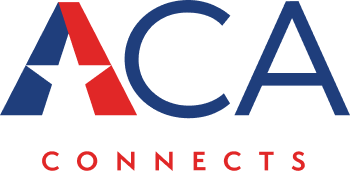The Share of U.S. Households with Access to Multiple Providers of Fast Broadband Continues to Grow Rapidly
The FCC’s just released updated Form 477 data (as of June 2021) confirms the findings in ACA Connects’ June 2022 report “Broadband Competition is Thriving Across America”: the share of U.S. Households that have access to multiple fixed providers of fast broadband is very large and is increasing rapidly. 1For each of the ACA Connects’ report’s seven benchmark levels of competition, the new data shows that, in a mere six months, the number of households that have access to fast broadband service from multiple providers increased appreciably. Indeed, the share of households having at least three broadband providers grew significantly faster than historical levels, and as a result, we are adjusting upwards our 2025 projections for the state of the competitive market. In sum: the vast majority of American consumers already have a choice of providers of fast broadband service and, given the enormous investments that private and public sectors are making and will make, we should soon reach our goal of giving virtually all consumers the ability to obtain fast broadband service from multiple providers.
In our original report, we defined seven different benchmark levels of competition based on the minimum number of providers capable of offering service at specified speeds. These were:
Benchmark #1:
At least two providers capable of offering service at 25/3+.2
Benchmark #2:
At least one provider capable of offering service at 100/20+ and at least one additional provider capable of offering service at 25/3+.
Benchmark #3:
At least two providers capable of offering service at 100/20+.
Benchmark #4:
At least three providers capable of offering service at 25/3+.
Benchmark #5:
At least one provider capable of offering service at 100/20+ and at least two additional providers capable of offering service at 25/3+.
Benchmark #6:
At least two providers capable of offering service at 100/20+ and at least one additional provider capable of offering service at 25/3+.
Benchmark #7:
At least three providers capable of offering service at 100/20+.
Table 1 presents data on the share of U.S. households with access to various levels of benchmark competition in December 2020 and June 2021, and difference between these two values.
Table 1
Comparison of Share of U.S. Households With Access to Various Benchmark Levels of Competition
| Benchmark | December 2020 | June 2021 | Difference |
| Benchmark #1 | 87.2% | 87.8% | 0.6% |
| Benchmark #2 | 84.1% | 85.3% | 1.2% |
| Benchmark #3 | 57.9% | 59.4% | 1.5% |
| Benchmark #4 | 52.3% | 61.9% | 8.6% |
| Benchmark #5 | 51.2% | 60.8% | 9.6% |
| Benchmark #6 | 39.0% | 47.8% | 8.8% |
| Benchmark #7 | 14.6% | 16.7% | 2.1% |
All of the shares continued to grow in the period for which newly released data is now available. The growth in the share of households with access to benchmark levels #4 to #6 was particularly dramatic and was actually about twice as large as would have been predicted based on historic growth rates. That is, the most recent data suggests that these growth rates are not only large but are actually accelerating.
In our original report, we also projected future shares of U.S. households that would have access to the various benchmark levels of competition in December 2025 based on historic growth rates. Table 2 presents the original projections and the updated projections based on the newly available data. In both cases, we followed the same method for estimating projected future shares in December 2025. 3
Table 2
Original and Updated Projections for the Share of U.S. Households That Will Served by Broadband Carriers Satisfying Various Benchmark Levels of Competition in December 2025
| Benchmark | Original Projection | Updated Projection |
| Benchmark #1 | 95% | 95% |
| Benchmark #2 | 95% | 95% |
| Benchmark #3 | 73.9% | 74.5% |
| Benchmark #4 | 85.5% | 91.9% |
| Benchmark #5 | 85.2% | 91.3% |
| Benchmark #6 | 71.0% | 80.6% |
| Benchmark #7 | 24.8% | 29.2% |
Projected shares of households served by broadband carriers satisfying the first two benchmarks remain at their capped values of 95%. However, all other projected shares increase. This reflects the fact that growth rates for benchmarks #3 to #7 accelerated in the newly released data, so using more recent data results in higher projected shares.
1 When we issued our initial report, the most recently available FCC Form 477 data was for December 2020. The FCC has recently released data for June 2021.
2 We use the notation x/y+ to denote broadband service with a download speed of at least x and an upload speed of at least y.
3 Specifically, for each benchmark we calculated the average percentage decline in the share of unserved households for the last two years for which data was available and assumed that this percentage decline in the share of unserved customers would continue through December 2025. We also capped projected shares of served customers at 95% to acknowledge that certain extremely high-cost areas may never be served by even a single unsubsidized broadband provider. As we argue in our original report, subsidized providers serving such areas are constrained by existing regulatory forces applied through high-cost support mechanisms.


